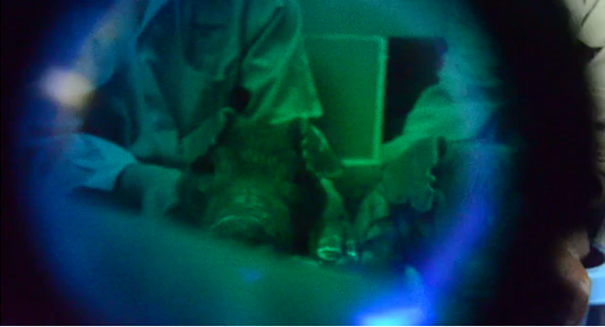
Introducing DNA to embryos could have huge medical benefits as further research is conducted.
Some things are made to glow in the dark, or under black light. Fireflies, for instance, create their own light through chemical reactions. That rad Jimi Hendrix poster you had in college looked swell when illuminated via black light. Pigs, on the other hand, do not glow in the dark, under black light, or any other circumstance. That is The Way of Things. That is, unless, you cross breed them with fluorescent jellyfish DNA, as did scientists in China.
In Guangdong Province in Southern China, ten transgenic piglets have been born this year, six of them since August, and under a black light, they glow a greenish tint.
The key lies within a fluorescent protein found in jellyfish DNA. The protein is injected directly into the pig embryos, a technique originally developed at the University of Hawaii. You may have first seen the technique used to create glow-in-the-dark bunnies, and you’ll see it soon again used in sheep.
Rather than a mission to specifically terrorize pig-averse children, the fluorescence is simply used to demonstrate the effectiveness of the DNA incorporation. “It’s just a marker to show that we can take a gene that was not originally present in the animal and now exists in it,” explains Dr. Stefan Moisyadi, a veteran bioscientist with the Institute for Biogenesis Research at the John A. Burns School of Medicine.
Dr. Moisyadi said the green glow doesn’t hurt or affect the pigs in any way, and they’ll live a full, healthy life before becoming bacon, just like any other pig.
Lest you fear that this is a prime example of very bored scientists toying with grant money, the research has a higher purpose: Over time, they hope to use similar techniques to introduce beneficial genes to larger animals, leading to more effective medicines.
“[For] patients who suffer from hemophilia and they need the blood-clotting enzymes in their blood, we can make those enzymes a lot cheaper in animals rather than a factory that will cost millions of dollars to build,” Dr. Moisyadi said.
Drs. Zhenfang Wu and Zicong Li of the South China Agricultural University have detailed the research that produced the transgenic pigs in an academic manuscript recently submitted to the Biology of Reproduction journal. Also assisting in the manuscript was Dr. Johann Urschitz, an Assistant Research Professor in the UH medical school’s IBR.
Leave a Reply